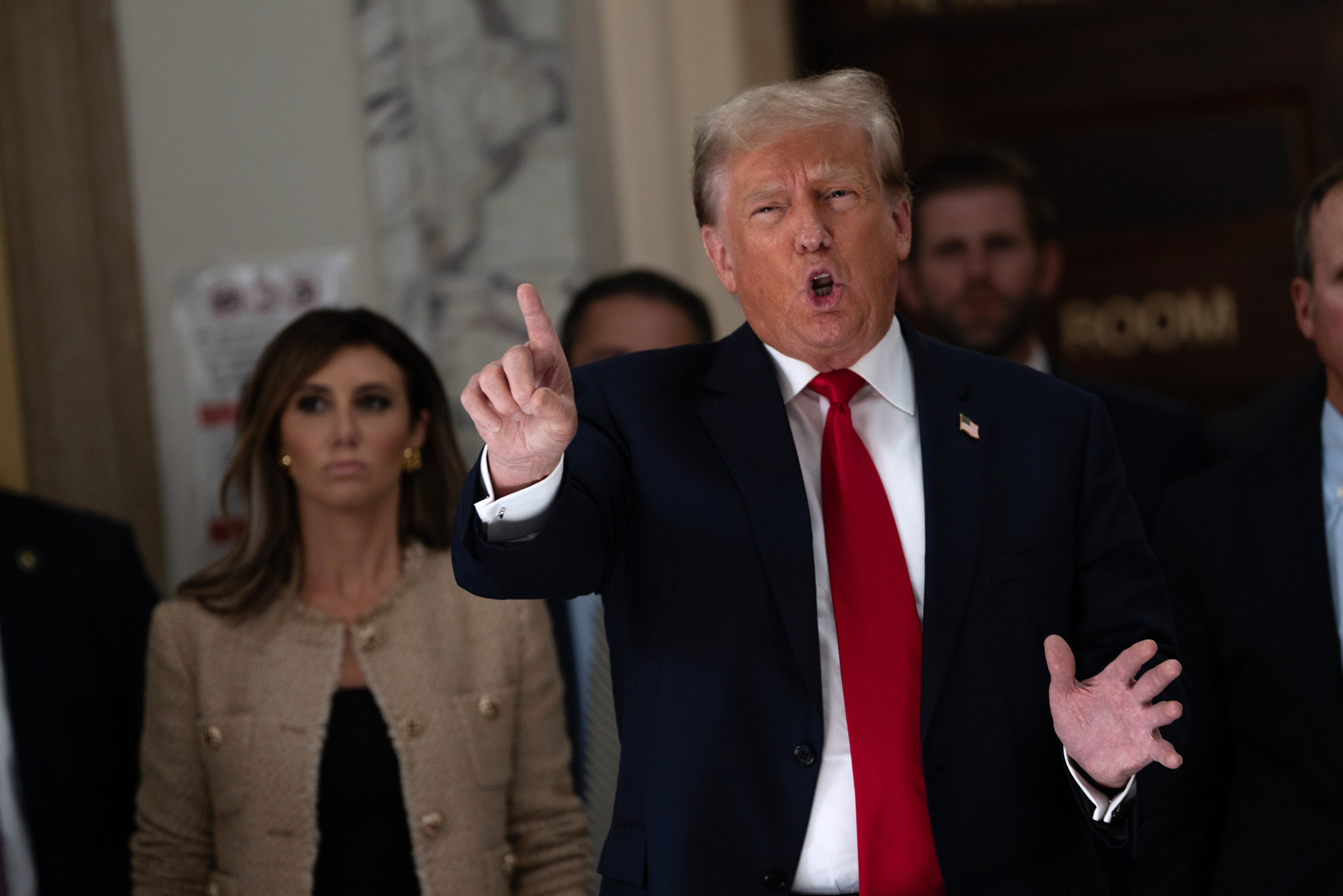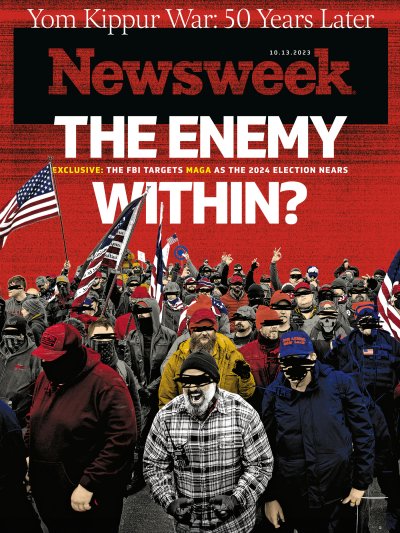They were found lifeless together on the bed—Kaylee Goncalves and her best friend, Madison "Maddie" Mogen, both 21, and on another floor of the Moscow, Idaho, house, police found the bodies of two other students, Xana Kernodle, 20, and Kernodle's boyfriend, Ethan Chapin, 20. Now, an expert told Newsweek there is one piece of evidence missing that could make or break the trial.
Mogen was leaning on Goncalves' shoulder. Goncalves had been having a sleepover in Mogen's third-floor room on the night of November 13, 2022, when an unknown killer stabbed both women to death.
On the bed beside their bodies, Moscow Police Officer Brett Payne noticed a tan leather knife sheath with a drop of blood on the button snap. That drop of blood is now central to the case against Bryan Kohberger, who has been charged with all four murders at the student house on King Road.

The sheath itself is a vital clue. It had "'Ka-Bar' 'USMC' and the United States Marine Corps eagle globe and anchor insignia stamped on the outside of it," Officer Payne wrote in a signed statement submitted in court.
Police speculate that the killer may have been startled to find two women in the bed and that Goncalves may have put up a fight, during which the killer was slightly injured, and dropped the knife sheath in the confusion.
A housemate downstairs, frozen with fear, saw a man wearing a COVID mask over his mouth walk by her and leave the house via the glass door at the back. He was a white male with bushy eyebrows. He wasn't muscular, she told police, but was slim and athletic.
According to Payne's legal submissions, police immediately began a troll of CCTV footage in the area and very quickly focused on a white car speeding down the street very soon after the murder. Officer Payne said he knew the Moscow street where the murders took place and knew that it was quiet and would rarely have traffic on it in the early hours of the morning.
When they put all the videos together, a picture began to emerge. The car had no front number plate, which is required by law in Idaho but not in some other states, such as Pennsylvania.
The police took the video footage to an FBI officer who specializes in identifying vehicles. Not only was the officer an expert on types and makes of vehicles, but he also knew that there were regional differences in the same make of car—sometimes a certain part may be used for cars sold in one part of America but not in another.
The FBI agent initially identified the car as a Hyundai Elantra made between 2011 and 2014, but, after reviewing the footage over and over looking for small clues, he expanded his range from 2011 to 2016.
While he was doing that, Moscow Police were studying the likely journey the car took after the murders. The car turned on to several other streets and then disappeared from CCTV footage. That led them to believe it had turned on to a ramp that would lead the driver on the road to Pullman in Washington state, another college town 10 minutes down the road.
As Officer Payne observed, there were strong ties between the two towns, and students often traveled from one town to another to see each other. With that, the massive police search moved to Pullman.
A search of the CCTV footage from the college in Pullman and a private resident's front porch shows a white Elantra showing up about 10 minutes after the suspect Elantra left Moscow.
It drives through several Pullman streets before disappearing from view.
Eventually, a Pullman police officer identified a white Elantra belonging to student Bryan Kohberger, originally from Pennsylvania. From the driveway, the officer could see that the car had no front license plate.
Officer Payne ran a computer search and, from Kohberger's drivers licence photo, could see that he was a slim white male with bushy eyebrows.
He also pulled Kohberger's phone number from the police computer—Kohberger had been stopped for speeding in Moscow and his phone number was in their computer system.
From there, the phone company was able to provide phone tower records, which can tell police where a person has traveled. To the police's dismay, the phone showed no record of being near the murder house that night.
Payne believed Kohberger could have left the phone in Pullman, where it had earlier pinged local phone towers, or he may have switched it to airplane mode and brought it with him to Moscow. Either way, Payne believed, it pointed to someone who knew how to avoid detection.
Kohberger was placed under covert police and FBI surveillance and they discovered that he would be traveling back to Pennsylvania in his Elantra. Several teams were instructed to follow him across America and never let him out of their sight.
In an incident that is still clouded in mystery, a traffic policeman stopped Kohberger's car and spoke to him briefly. The officer was wearing a body cam and Officer Payne was quickly able to review the video footage and establish that Kohberger had bushy eyebrows. It was important for police to see what he looked like in real life, and not simply rely on a driver's license photo. We still don't know if this was a genuine police stop or, given the speed with which the body cam footage was recovered, a police ploy to get a closer look at Kohberger.
The knife sheath blood drop came back from DNA analysis—it was from a male. The police still didn't have Kohberger's DNA to compare to the knife sheath blood drop and didn't want to arouse Kohberger's suspicion, especially as they wanted to see if he would dispose of the knife somewhere on the drive across America. As far as they could tell, he didn't.
When he was back at the family home in Pennsylvania, he remained under 24-hour surveillance and police saw him empty out the trash in the early hours of the morning. When he went back into the house, they carefully sifted through the garbage. There was no knife or anything incriminating.
Lab technicians did, however, extract a DNA sample from a food sample in the trash. The lab result showed that Kohberger's father "could not be excluded" as the source of the DNA. That may not sound significant, but 99.9999% of all people could be excluded from the sample. Police were satisfied it was Kohberger's father's DNA.
From there, police found that there was a family link to the Idaho blood drop. Whoever spilled his own blood in Mogen's room was an offspring of Kohberger's father. Kohberger was soon arrested and remains in detention. However, there are still significant gaps in the investigation and Kohberger is entitled to a presumption of innocence.
Police are still stuck on a major question—where is the murder knife? Nobody knows. Documents released last week show that police had been seeking all of Kohberger's search records for the word "knife", all of his wish lists on online shopping sites and all of his online purchases, in the hope of finding that he purchased a knife that matches the sheath found in the Idaho murder house.
Amazon and other tech companies have handed over records and those are now stored in the Moscow police department. Their contents are not yet publicly known.
Throughout month after month of this intense forensic investigation, Kohberger has stayed silent. He has not spoken to police in interviews and didn't enter a plea when asked to do so in court. Instead, a not-guilty plea was entered on his behalf by the Idaho court.
According to former federal prosecutor, Neama Rahmani, who is now president of West Coast Trial Lawyers, the lack of murder weapon does not sink the case against Kohberger.
"Prosecutors would love to have the murder weapon, especially any DNA on it, but it's not fatal to their case. They'll argue that Kohberger is more sophisticated than your typical accused murderer and probably disposed of it somehow," Rahmani told Newsweek.
He also said that Kohberger's likely silence at trial may work against him, even though he is legally entitled not to speak.
"Even though jurors are instructed that they can't infer guilt from the defendant's silence, implicitly it may have an effect. That's why we're seeing a trend with more defendants taking the stand, particularly in high profile cases like Elizabeth Holmes and Alex Murdaugh," he said.
Newsweek has emailed Kohberger's public defense attorney for comment.








